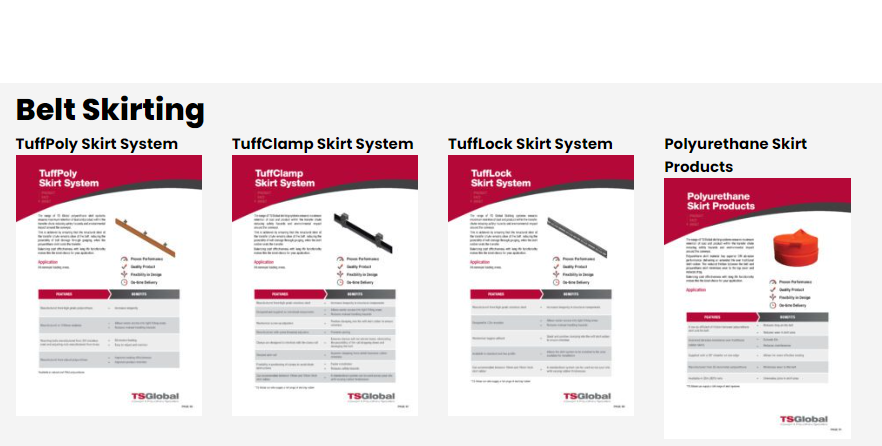
How Conveyor Skirting Can Save Your Business.
In the world of material handling and logistics, efficiency and cost-effectiveness are paramount. Businesses rely heavily on conveyor systems to transport goods efficiently within their facilities. However, one common issue that has plagued many industries is material spillage from conveyor belts. This problem not only leads to product loss but can also result in safety hazards, increased maintenance costs, and a negative impact on the environment. Thankfully, there’s a solution that can help you say goodbye to spillage and save your business: conveyor skirting.
Understanding the Spillage Problem
Before delving into the benefits of conveyor skirting, it’s essential to understand why spillage occurs in the first place. Conveyor belts are designed to move materials from one point to another, but they are not always perfect at containing those materials. Factors like belt misalignment, material surges, and belt wear and tear can all contribute to spillage. When materials spill from the conveyor, they not only create a mess but can also lead to inefficiencies and costly clean-up procedures.
The Role of Conveyor Skirting
Conveyor skirting is a simple yet effective solution to the spillage problem. It consists of rubber or polyurethane strips that are installed along the sides of the conveyor belt. These strips act as a barrier, preventing materials from escaping the conveyor and falling onto the floor or surrounding equipment.
Benefits of Conveyor Skirting
Reduced Material Loss: One of the most significant advantages of conveyor skirting is the reduction in material loss. When materials are contained within the conveyor system, you can minimize product wastage, which can translate into substantial cost savings over time.
Improved Safety: Spillage on the conveyor system or floor can create slippery surfaces, increasing the risk of accidents. Conveyor skirting helps maintain a cleaner and safer working environment, reducing the chances of injuries and costly workers’ compensation claims.
Less Maintenance: Spillage not only damages the environment but also the conveyor system itself. Over time, material buildup can lead to increased wear and tear on belts, idlers, and rollers. By preventing spillage, conveyor skirting extends the lifespan of your equipment, reducing maintenance costs.
Environmental Benefits: Minimizing spillage also has a positive impact on the environment. Materials that escape from the conveyor system can be harmful, especially in industries dealing with hazardous substances. Conveyor skirting helps businesses meet environmental regulations and reduce their carbon footprint.
Increased Efficiency: Less spillage means fewer interruptions in the production process. Your operations can run smoothly without the need for frequent shutdowns to clean up spillage, resulting in increased productivity and profitability.
Choosing the Right Conveyor Skirting
When selecting conveyor skirting for your business, consider factors such as the type of materials you handle, belt width, and your specific application needs. It’s essential to choose high-quality skirting materials and ensure proper installation to reap the full benefits.
In conclusion, conveyor skirting is a cost-effective and practical solution to the persistent problem of material spillage in conveyor systems. By implementing skirting, your business can reduce material loss, improve safety, minimize maintenance costs, protect the environment, and boost overall efficiency. So, if you’ve been struggling with spillage issues in your facility, it’s time to say goodbye to the problem and embrace conveyor skirting as a valuable asset for your business.


